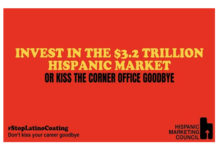The number of S&P 500 companies integrating climate and ESG-related metrics into their executives’ compensation plans more than doubled over the past two years, according to a new report from The Conference Board.
Executive compensation was tied to climate-related metrics by about 25% of S&P 500 firms in 2021 but rose to 54% in 2023, according to data analysis from data mining and analytics firm ESGAUGE. The percentage also doubled in the Russell 3000 index, up from 16% to 32%. Moreover, as the rate of adoption of climate and other ESG performance metrics increases, companies have also started using them in long-term incentive (LTI) plans. The share of S&P 500 companies using ESG metrics in annual and long-term incentive plans grew from 7% in 2021 to 12% in 2023.
“Companies that have not yet adopted ESG metrics for driving environmental performance should explore this avenue, especially in industries that have a significant environmental impact,” stated Matteo Tonello, Managing Director at The Conference Board ESG Center and author of the report. “When implementing such metrics, companies should tailor them to their unique environmental risks and opportunities, rather than relying on off-the-shelf emission targets.”
CLIMATE & ESG-RELATED METRICS
The report, produced in collaboration with executive compensation consulting firm FW Cook, also revealed that using climate-related metrics in incentive plans is primarily a function of the business sector in which the company operates. Business activities with traditionally high environmental impact increasingly turn to carbon footprint and emission reduction metrics. For example, in energy companies the adoption of these metrics grew from 37% in 2021 to 68% in 2023, and in utility firms it grew from 24% to 39%.
Additionally, those in sectors such as health care (9%), financial (9%), and communication services (15%) are less likely to include such metrics, even though companies in these industries may have a significant direct or indirect environmental impact.
ESG & CLIMATE-RELATED METRICS IN COMPENSATION PLANS
The study also found that larger companies are more likely to integrate environmental metrics in compensation plans. For example, two-thirds (67%) of Russell 3000 companies with annual revenues of $50 billion or more use environmental performance metrics, up from 27% in 2021. Only 15% of companies with annual revenue under $100 million use such performance metrics, a share virtually unchanged compared to 2021.
While considering ESG as part of individual performance assessments continues to be the predominant practice, large companies are moving toward more quantifiable and less discretionary objectives. For example, around 31% of S&P 500 companies use discrete, stand-alone ESG metrics, up from 26% in 2021. In the Russell 3000, the percentage rose slightly from 18% to 19%. The share of companies using strategic scorecards, which combine one or more ESG metrics, increased from 21% to 35% in the S&P 500 and from 10% to 18% in the Russell 3000.
The findings also revealed that companies are starting to use ESG performance metrics in their long-term incentive plans. In fact, a growing number of companies are using these measures in both their annual and long-term incentive plans. In the S&P 500, the percentage increased from 7% in 2021 to 13% in 2023, while in the Russell 3000 it grew from 5% to 8%.
ESG PERFORMANCE METRICS & DEI
“Thanks to the increased familiarity with ESG metrics and access to extensive benchmarking data, companies are better positioned to incorporate ESG measures into their long-term incentive programmes,” said Steve Cross, Managing Director of FW Cook. “Given the enduring nature of many ESG objectives, their inclusion in LTI plans can be a strategic and logical choice.”
The most frequently used ESG performance metrics reflect companies’ commitment to diversity, equity, and inclusion (DEI), according to the report. Over three-quarters (75%) of S&P 500 companies use DEI metrics, up more than 20 percentage points in two years. In the Russell 3000, the percentage rose from 29% to 49%. That pace outstrips more traditional operating metrics such as customer satisfaction (which 37% of S&P 500 companies and 29% of Russell 3000 use, according to 2023 filings), and employee health and safety (31% in the S&P 500 and 27% in the Russell 3000).
TALENT DEVELOPMENT METRICS
Talent development metrics are prevalent across all sectors but are especially common in industries that rely on highly specialised skills and are in highly competitive labour markets. According to the business sector analysis conducted on the Russell 3000 index, financial (32%), health care (28%), and information technology companies (20%) use performance metrics related to talent development. Metrics such as recruitment, retention, and turnover are especially popular with healthcare (43%) and financial companies (37%).
“Compensation committees should pinpoint and prioritise ESG factors aligning with their company’s overarching long-term business strategy,” said Umesh Chandra Tiwari, Executive Director of ESGAUGE. “As companies embed sustainability more extensively into their operations, it becomes imperative to choose incentives that not only align with a broader societal purpose but also contribute to a competitive edge.”
Check out the results from last year’s study here.




































